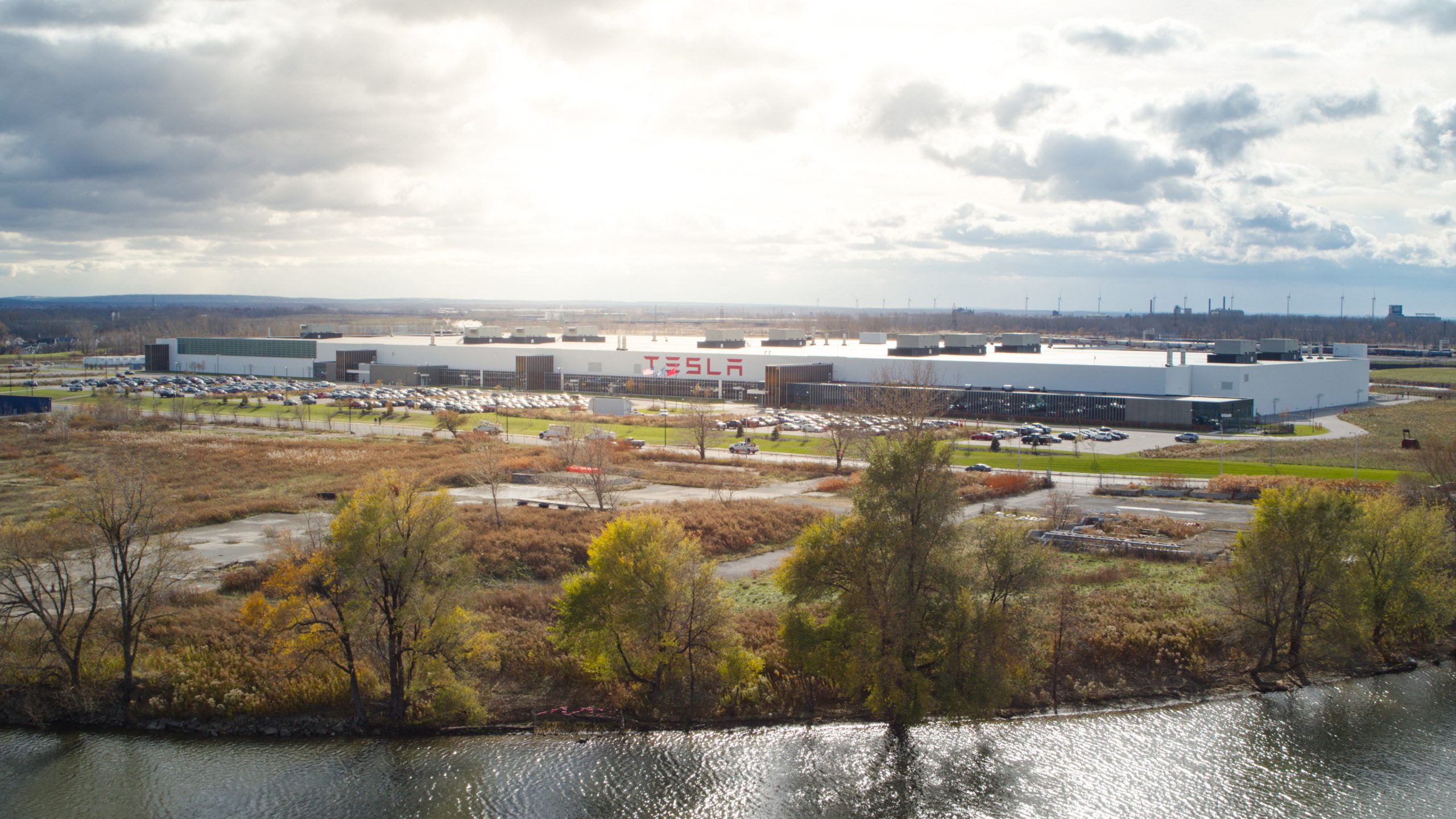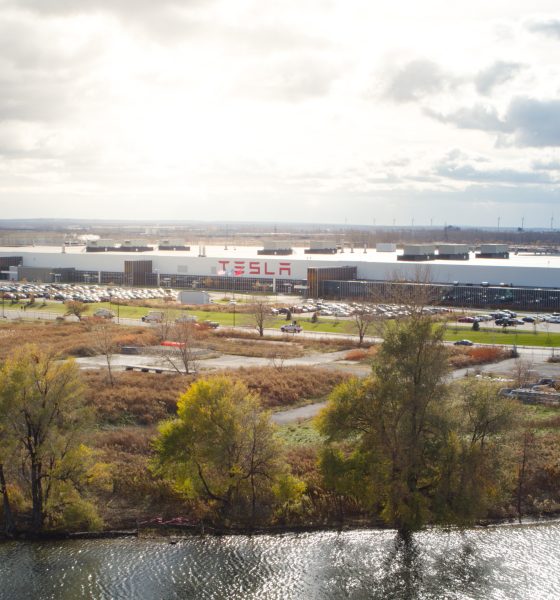

News
Tesla exceeds its job and investment commitments for Gigafactory New York
New York State officials have noted that Tesla has far exceeded its job and investment commitments for Gigafactory New York. The facility was created with the goal of bringing in over 2,000 jobs to New York State, including 1,460 jobs in Western New York.
As per the state, Tesla reported that it had a total of 2,265 workers across New York State at the end of 2021, 1,636 of which were employed in Buffalo. Pamm Lent, a spokesperson for Empire State Development, explained that Tesla was able to expand its operations in New York by diversifying the jobs that it offered to the local workforce.
Following is the ESD’s statement.
Tesla is reporting it has far exceeded its job and investment commitments at the Buffalo Gigafactory. Tesla has been working to expand and diversify the facility’s operations, while also growing its manufacturing portfolio, which resulted in them meeting their 2021 obligations regarding statewide employment and cumulative investment.
At the close of the 2021 reporting period, Tesla’s New York State headcount reportedly stood at 2,265 – including the Gigafactory headcount in Buffalo of 1,636.
Competitive wages and generous benefits have attracted these employees to the Gigafactory which include health insurance, 401K and discounted rates for company stock among other employee benefits.
Tesla is also reporting an accrued cumulative investment and spending in New York State of $ 1,034,920,157 as of December 31, 2021 – an amount more than $ 560M over the current bond. Tesla’s official submission of its job and financial commitment report will undergo verification, as required by the State’s due diligence process.
While navigating the challenges of the pandemic, Tesla managed to grow its operation by diversifying to include work on charging systems and Tesla’s autonomous and self-driving vehicle initiatives- demonstrating its commitment to building the Gigafactory into a world-class advanced manufacturing center while expanding its business throughout New York State.
-Pam Lent, ESD Spokeswoman
Interestingly enough, the current mix of jobs at Gigafactory New York are quite different from what was envisioned in the past. Initially, the plan was to have the facility focus on Tesla’s solar products like the Solar Roof and conventional solar panels. Tesla’s Solar Roof ramp has so far proven to be challenging, and the company reportedly no longer plans to make conventional solar panels in the facility.
These setbacks, however, paved the way for Tesla to shift its strategy in Giga New York. The company decided to make electronic components for its Superchargers at the site, including air- or liquid-cooled cables that connect a charging stall to an all-electric vehicle. Production of the Powerstage, an inverter that is used in the Megapack, is also being done at Gigafactory New York.
More importantly, Tesla was able to hire hundreds of new employees in New York as part of its Autopilot program. The majority of these positions are for data annotation work, which requires only a high school diploma. Tesla’s data annotation team in New York continues to grow, especially amidst the expansion of the FSD Beta program, which could pave the way for Tesla to achieve full autonomous driving in the near future.
Don’t hesitate to contact us with news tips. Just send a message to simon@teslarati.com to give us a heads up.

News
Tesla FSD fleet is nearing 7 billion total miles, including 2.5 billion city miles
As can be seen on Tesla’s official FSD webpage, vehicles equipped with the system have now navigated over 6.99 billion miles.

Tesla’s Full Self-Driving (Supervised) fleet is closing in on almost 7 billion total miles driven, as per data posted by the company on its official FSD webpage.
These figures hint at the massive scale of data fueling Tesla’s rapid FSD improvements, which have been quite notable as of late.
FSD mileage milestones
As can be seen on Tesla’s official FSD webpage, vehicles equipped with the system have now navigated over 6.99 billion miles. Tesla owner and avid FSD tester Whole Mars Catalog also shared a screenshot indicating that from the nearly 7 billion miles traveled by the FSD fleet, more than 2.5 billion miles were driven inside cities.
City miles are particularly valuable for complex urban scenarios like unprotected turns, pedestrian interactions, and traffic lights. This is also the difference-maker for FSD, as only complex solutions, such as Waymo’s self-driving taxis, operate similarly on inner-city streets. And even then, incidents such as the San Francisco blackouts have proven challenging for sensor-rich vehicles like Waymos.
Tesla’s data edge
Tesla has a number of advantages in the autonomous vehicle sector, one of which is the size of its fleet and the number of vehicles training FSD on real-world roads. Tesla’s nearly 7 billion FSD miles then allow the company to roll out updates that make its vehicles behave like they are being driven by experienced drivers, even if they are operating on their own.
So notable are Tesla’s improvements to FSD that NVIDIA Director of Robotics Jim Fan, after experiencing FSD v14, noted that the system is the first AI that passes what he described as a “Physical Turing Test.”
“Despite knowing exactly how robot learning works, I still find it magical watching the steering wheel turn by itself. First it feels surreal, next it becomes routine. Then, like the smartphone, taking it away actively hurts. This is how humanity gets rewired and glued to god-like technologies,” Fan wrote in a post on X.
News
Tesla starts showing how FSD will change lives in Europe
Local officials tested the system on narrow country roads and were impressed by FSD’s smooth, human-like driving, with some calling the service a game-changer for everyday life in areas that are far from urban centers.

Tesla has launched Europe’s first public shuttle service using Full Self-Driving (Supervised) in the rural Eifelkreis Bitburg-Prüm region of Germany, demonstrating how the technology can restore independence and mobility for people who struggle with limited transport options.
Local officials tested the system on narrow country roads and were impressed by FSD’s smooth, human-like driving, with some calling the service a game-changer for everyday life in areas that are far from urban centers.
Officials see real impact on rural residents
Arzfeld Mayor Johannes Kuhl and District Administrator Andreas Kruppert personally tested the Tesla shuttle service. This allowed them to see just how well FSD navigated winding lanes and rural roads confidently. Kruppert said, “Autonomous driving sounds like science fiction to many, but we simply see here that it works totally well in rural regions too.” Kuhl, for his part, also noted that FSD “feels like a very experienced driver.”
The pilot complements the area’s “Citizen Bus” program, which provides on-demand rides for elderly residents who can no longer drive themselves. Tesla Europe shared a video of a demonstration of the service, highlighting how FSD gives people their freedom back, even in places where public transport is not as prevalent.
What the Ministry for Economic Affairs and Transport says
Rhineland-Palatinate’s Minister Daniela Schmitt supported the project, praising the collaboration that made this “first of its kind in Europe” possible. As per the ministry, the rural rollout for the service shows FSD’s potential beyond major cities, and it delivers tangible benefits like grocery runs, doctor visits, and social connections for isolated residents.
“Reliable and flexible mobility is especially vital in rural areas. With the launch of a shuttle service using self-driving vehicles (FSD supervised) by Tesla in the Eifelkreis Bitburg-Prüm, an innovative pilot project is now getting underway that complements local community bus services. It is the first project of its kind in Europe.
“The result is a real gain for rural mobility: greater accessibility, more flexibility and tangible benefits for everyday life. A strong signal for innovation, cooperation and future-oriented mobility beyond urban centers,” the ministry wrote in a LinkedIn post.
News
Tesla China quietly posts Robotaxi-related job listing
Tesla China is currently seeking a Low Voltage Electrical Engineer to work on circuit board design for the company’s autonomous vehicles.

Tesla has posted a new job listing in Shanghai explicitly tied to its Robotaxi program, fueling speculation that the company is preparing to launch its dedicated autonomous ride-hailing service in China.
As noted in the listing, Tesla China is currently seeking a Low Voltage Electrical Engineer to work on circuit board design for the company’s autonomous vehicles.
Robotaxi-specific role
The listing, which was shared on social media platform X by industry watcher @tslaming, suggested that Tesla China is looking to fill the role urgently. The job listing itself specifically mentions that the person hired for the role will be working on the Low Voltage Hardware team, which would design the circuit boards that would serve as the nervous system of the Robotaxi.
Key tasks for the role, as indicated in the job listing, include collaboration with PCB layout, firmware, mechanical, program management, and validation teams, among other responsibilities. The role is based in Shanghai.
China Robotaxi launch
China represents a massive potential market for robotaxis, with its dense urban centers and supportive policies in select cities. Tesla has limited permission to roll out FSD in the country, though despite this, its vehicles have been hailed as among the best in the market when it comes to autonomous features. So far, at least, it appears that China supports Tesla’s FSD and Robotaxi rollout.
This was hinted at in November, when Tesla brought the Cybercab to the 8th China International Import Expo (CIIE) in Shanghai, marking the first time that the autonomous two-seater was brought to the Asia-Pacific region. The vehicle, despite not having a release date in China, received a significant amount of interest among the event’s attendees.








